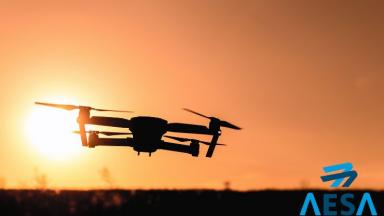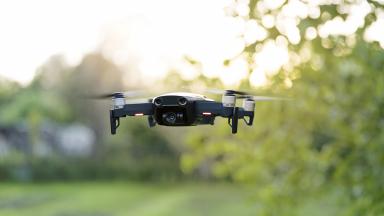Published the National Action Plan for U-space Deployment that will integrate drones into airspace

Madrid, 13 June 2022 (AESA)
The extraordinary progress of the unmanned aircraft systems (UAS) sector globally calls for a complete transformation of the air transport system as previously known, based on automation and digitisation, with less dependence on the human factor.
The growth of these operations requires safe integration with the rest of air traffic. To this end, the European Commission has established a regulatory framework to manage UAS traffic in an automated and integrated manner with manned aviation. This concept is what is called U-space.
U-space is the set of services and procedures that are being developed in a coordinated manner to enable a high number of operations with unmanned aircraft, especially those of greater complexity, in an orderly, fluid, safe and affordable way.
In order to comply with this European legislation, the Ministry of Transport, Mobility and Urban Agenda has established the National Action Plan for the Deployment of the U-space (Pandu). The document is developed under the leadership of the Directorate General of Civil Aviation (DGAC) with the co-authorship of the State Aviation Safety Agency (AESA) and ENAIRE, as well as the outstanding collaboration in its development of the Ministry of Defence.
During the deployment of this Plan, special dedication will be made to provide transparency and dissemination to all interest groups to involve them, especially the regional and local administrations, since the system will have a marked urban character.
This plan involves all stakeholders in the sector to promote the development of infrastructure and the implementation of U-space services in a coordinated and efficient manner throughout the national territory. High-level strategic decisions and possible regulatory developments will be required, in line with European implementing legislation in January 2023 following their adoption in April 2021.
The Plan sets out four objectives, which will be translated into specific action lines and actions along its time horizon:
1. Actions in the area of airspace.
2. Implementation of the national service delivery model.
3. Deployment of U-space and CIS services and enablers for their provision.
4. Establishment of mechanisms for cooperation and collaboration between administrations.
To comply, working groups are established with the participation of the Directorate-General for Civil Aviation, the State Aviation Safety Agency, the Air Staff, the Ministry of the Interior, ENAIRE, the SAERCO and FerroNATS air navigation providers, providing support and technical assistance to CIDETMA (Interministerial Commission for Defence and Transport, Mobility and Urban Agenda).
The deployment of U-space will bring with it the integration into the global system of two new service providers:
CISP: Common Information Service Provider
It will be a unique and reliable source of all common information. They will be responsible for providing a service consisting of the dissemination of static and dynamic data that will enable the provision of U-space services.
USSP: Uspace Service Provider
Users of U-space services may have different U-space service providers (USSPs) certified operating under competitive market conditions for the management of their operation. They will actively coordinate with air traffic control (ATSPs) providers, able to do so through the CISP, for the exchange of information and the proper functioning of all operations.
The U-space Regulation leaves the U-space service model to the choice of each State. Spain has opted for a centralised model, where ENAIRE will be certified as a single provider of common information services (CISP).
With a view to its future certification as a single provider of Common Information Services (CISP) in Spain and a USSP provider for specific public sector activities, ENAIRE is working on the development and validation of its U-space platform.
ENAIRE, as a national operator of air navigation services and the only aeronautical information provider in Spain, will have a very important operational role in the safe integration of drones with conventional civil aviation.
It should be noted that, although the operations of military and State aircraft are excluded from the scope of the U-space Regulation, the involvement of military authorities in relation to U-space airspace is considered key to ensuring the level of safety and security required in these airspaces. Therefore, the military side should be part of the coordination, cooperation and collaboration mechanisms established for the implementation of the U-space.
The Plan published by the Directorate General of Civil Aviation is available on the website of the Ministry of Transport, Mobility and Urban Agenda.
Noticias relacionadas





